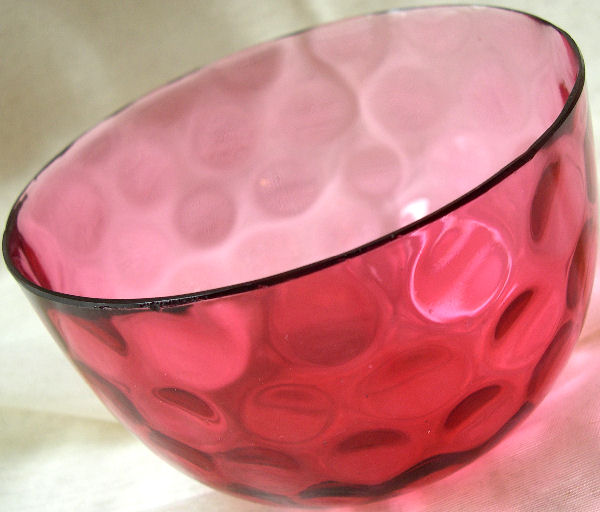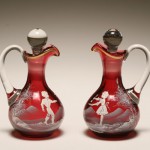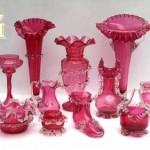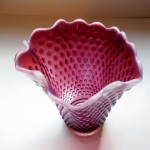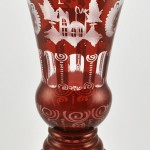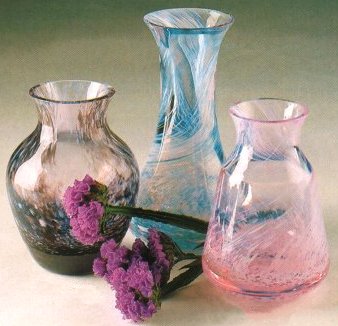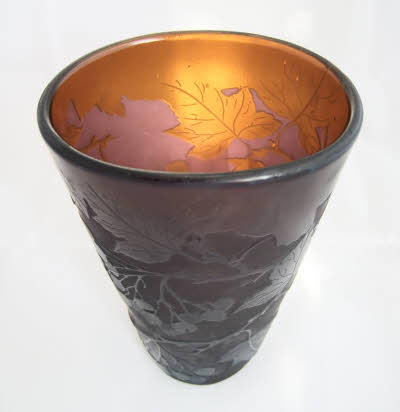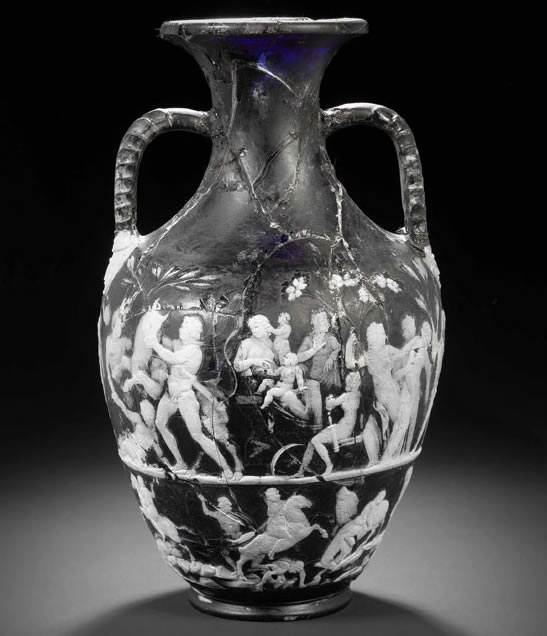The appealing pink of cranberry glass makes it the most collectable type of coloured Victorian glass. Also the enormous variety of shapes in which it can be found, Cranberry glass was very much a Victorian invention, made from the 1850s to the outbreak of World War 1. It’s generally pale pink, rather like runny raspberry jam, though earlier pieces can be darker, and a shade that was close to tawny was produced in Edwardian times.
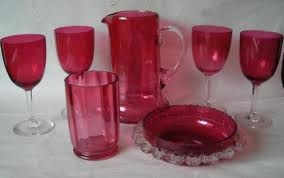 The Romans made red glass by adding copper oxide to their mix, and in the Middle Ages manganese was used to produce a pale red. In 1680 a German glassmaker discovered how to produce ruby-coloured glass with a consistent colour by using gold chloride. However, coloured glass remained a mid-European specialty. Though some was made in the West Midlands and the Bristol area from about 1750 until the mid-19th century, when British makers set out to emulate the popular coloured glass from Bohemia. Various colours were made, but it was the red that really caught the popular imagination.
The Romans made red glass by adding copper oxide to their mix, and in the Middle Ages manganese was used to produce a pale red. In 1680 a German glassmaker discovered how to produce ruby-coloured glass with a consistent colour by using gold chloride. However, coloured glass remained a mid-European specialty. Though some was made in the West Midlands and the Bristol area from about 1750 until the mid-19th century, when British makers set out to emulate the popular coloured glass from Bohemia. Various colours were made, but it was the red that really caught the popular imagination.
Most British cranberry glass was made in and around Stourbridge in the West Midlands, in factories and unregistered back-yard ‘cribs’. All of it was free-blown or mould-blown; press-moulded pieces of cranberry glass are a rare American specialty.
Almost every household article that could be made in glass was produced in cranberry. These included beakers and wine glasses, dessert glasses and custard cups, decanters and scent bottles, vases and jugs of all shapes and sizes, bon-bon dishes, posy holders, trinket boxes, oil lamps, candle holders and cruets.
Epergnes, table centre-pieces, were a specialty. A shallow frilled bowl or mirror supported a metal collar into which was inserted an elongated, trumpet-shaped posy vase.
Extravagant examples had several vases and scrolling rods of clear glass on which were hung small glass baskets. Everything had a fluted or wavy edge and was decorated with winding trails of clear glass.
Novelties such as boots and shoes, bells, pipes and rolling pins were produced fairly cheaply, often from poor quality glass, made by reheating the waste. The colour helped to disguise this, as did enamelled or gilded flowers. This extra decoration was often applied without firing, and may have worn off over the years, with only faint traces left of the glue that was used to fix the gilding. Cranberry glass varied from the rich reds of early ruby glass to delicate shades of raspberry pink in later years.
Cranberry glass isn’t hard to find. It often comes up at auctions, and can be seen at antiques fairs and antiques shops. Small, novelty pieces may turn up from time to time in boot sales and the like. However, like almost everything in the world of antiques, reproduction is rife and cranberry glass has been copied by modern glassmakers. The reproduction glass, though, doesn’t have the warmth of colour of the old glass, and has an almost bluish tinge, best seen when it’s held up to the light. The best way to spot fakes is to look at and handle the real thing as much as possible. If you’re not sure, don’t buy.
It’s very difficult to date cranberry glass, though the shapes may help. In the 1860s, short scroll legs were popular on bowls; twisted handles on jugs were all the rage in the 1860s and 1870s, as was the application of opaque glass beads. Baskets of all kinds became popular in the 1880s and 1890s.

